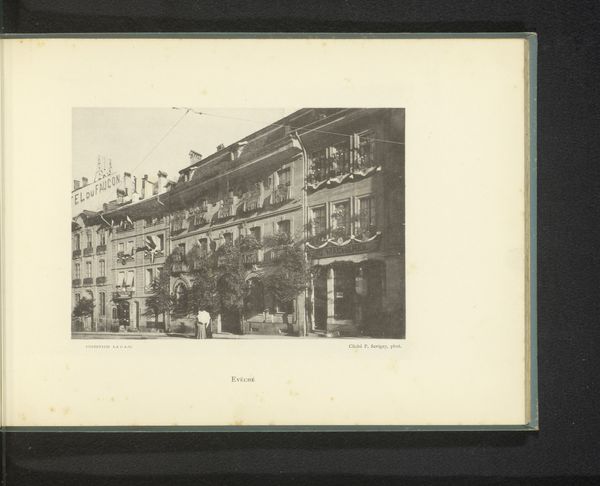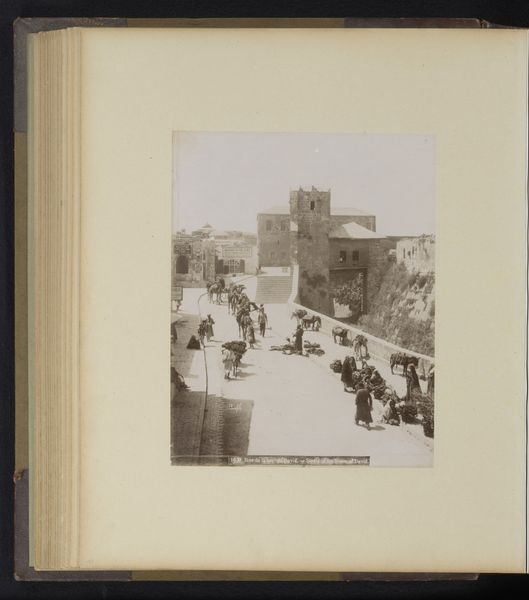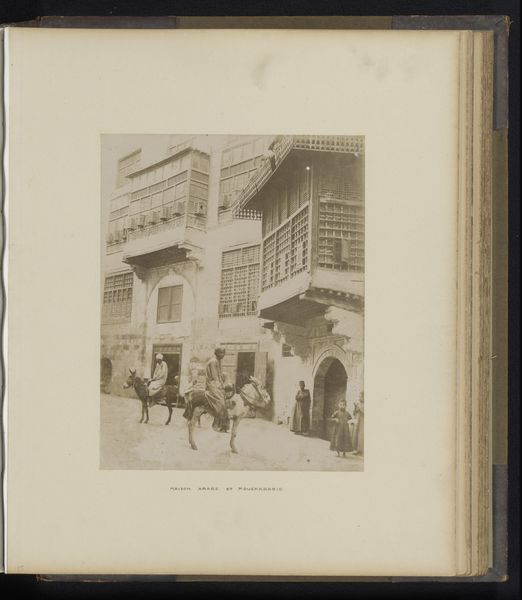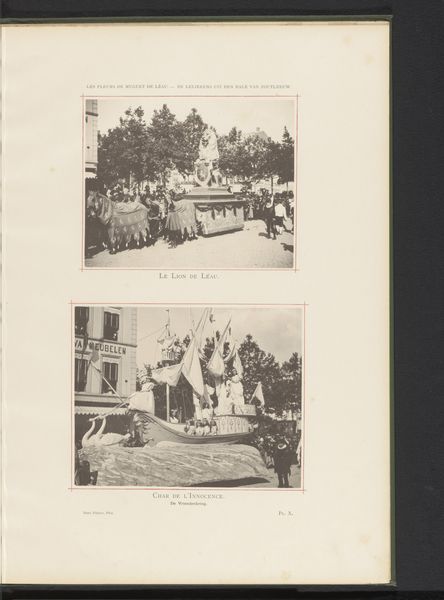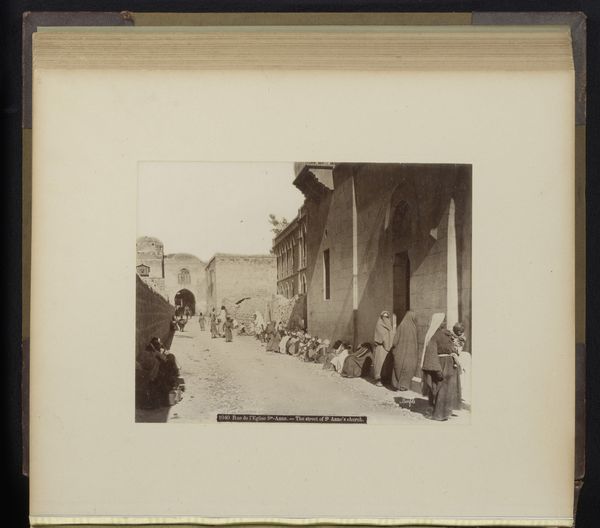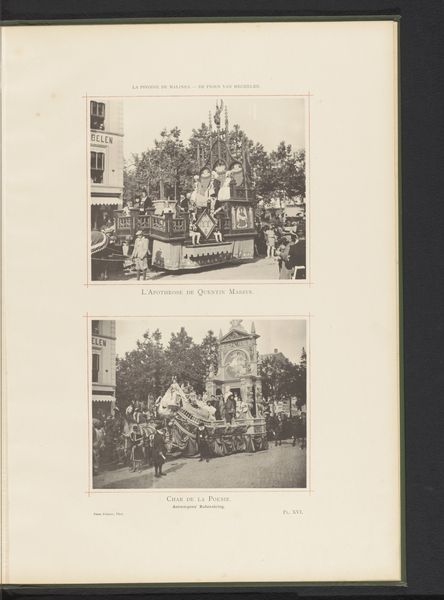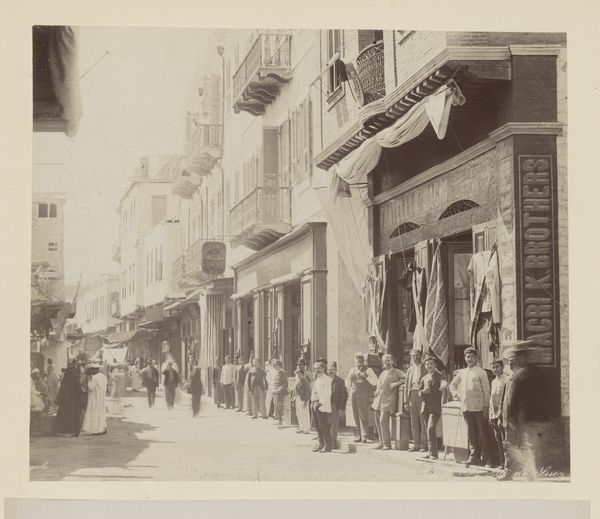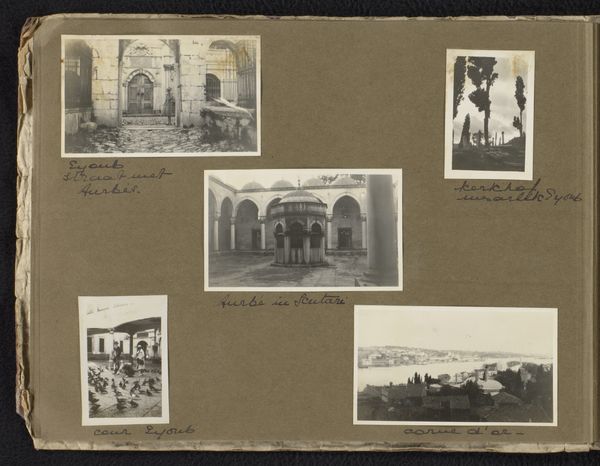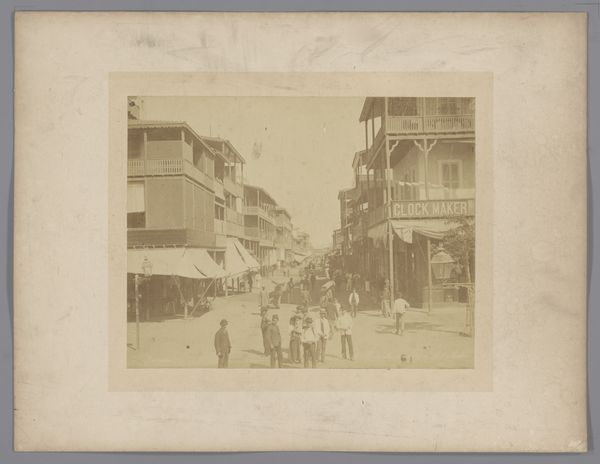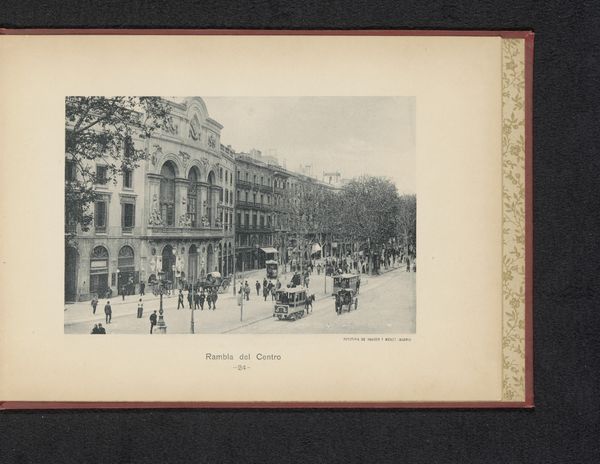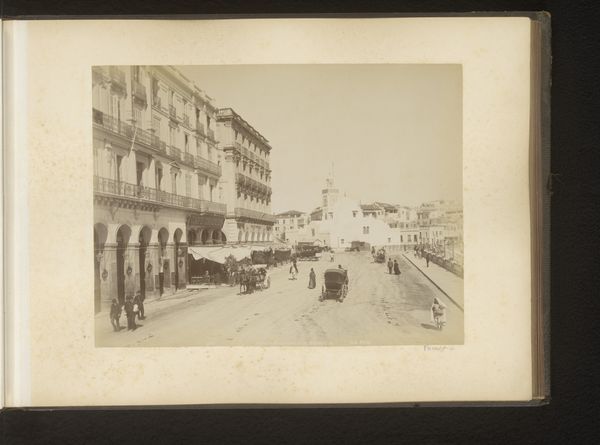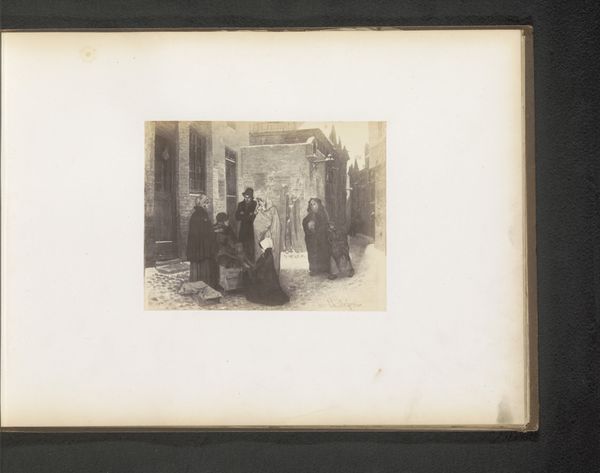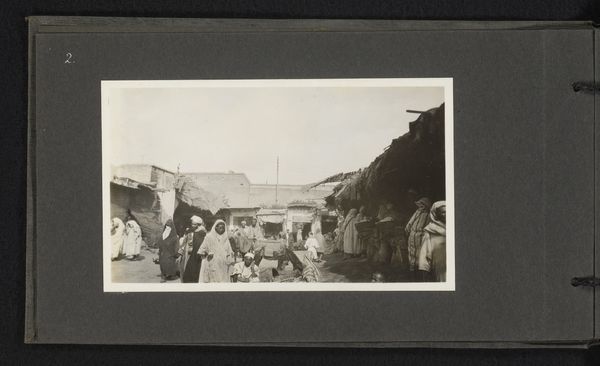
Processie door een straat in Fribourg, vermoedelijk ter herdenking van de sterfdag van Petrus Canisius in 1597 1897
0:00
0:00
print, photography
#
pictorialism
# print
#
street-photography
#
photography
#
cityscape
Dimensions: height 112 mm, width 162 mm
Copyright: Rijks Museum: Open Domain
Curator: We're looking at "Processie door een straat in Fribourg, vermoedelijk ter herdenking van de sterfdag van Petrus Canisius in 1597," a photographic print from 1897 attributed to P. Savigny. Editor: Immediately, I’m struck by how somber it feels. Despite what seems to be a celebratory procession, the tones are quite muted, almost ghostly. Curator: Savigny's command of composition is quite apparent. Note how the converging lines of the buildings and street draw the eye directly toward the procession. The contrast between the shadowed foreground and the brighter, receding space is expertly managed. It shows an inherent grasp of tonal value and perspective. Editor: And within that procession, there's a clear hierarchy, isn’t there? The individuals at the forefront are clearly privileged. What kind of politics and social norms dictated who was at the head of that march in late 19th century Fribourg? What systems are they meant to reinforce through visibility and positioning? Curator: That’s a fair observation, and indeed a critical component for pictorialists like Savigny—using the visible world to comment on interior emotional realities or spiritual beliefs, as demonstrated by careful staging and lighting, as is very evident here. Editor: This piece also prompts questions about power. Who has the authority to document this procession, to freeze it in time? Photography, from its inception, has been entangled with the colonial gaze, dictating who gets seen and how. What biases did Savigny bring to his documentation? Curator: Though an adept representation of its historical moment, Savigny is also manipulating the medium itself. There’s a deliberate softness, an intentional lack of sharp detail that almost obfuscates specificity to create a scene rooted in a much broader set of themes. Editor: So while it is ostensibly an event that centers spirituality and commemoration, there is also something much deeper at play when observing a spectacle, such as the politics that were inherent to such rituals. Thank you for offering insights that have deepened my reading of this work. Curator: And thank you for illuminating some often-overlooked aspects, viewing beyond mere structural presentation. I find myself, as usual, admiring anew Savigny’s masterful use of the photographic form, while, simultaneously, being thankful for additional, very necessary contextual considerations.
Comments
No comments
Be the first to comment and join the conversation on the ultimate creative platform.
